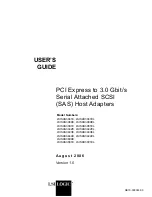
Operating Principles
Rev. A
2-3
2.2.2.2 Printing Process
Steps bellow describe how the ink is ejected from each nozzle with the on-demand ink jet system.
Step 1
Normal state
No print signal is applied to the PZT. In this state, the PZT does not displace and no pressure is added
inside the cavity. Therefore the pressure in the cavity is kept at a constant level.
Step 2
Ejecting state
Print signal is applied to a specific nozzle by the head driver circuit to drive the PZT of the nozzle. The
voltage which drives the PZT is produced in the common driver circuit board on the control board. When
the voltage is applied to the PZT, the PZT displaces and the pressure in the cavity changes. Then the ink
is ejected as a result.
When no print signal is applied to the PZT, the PZT recovers from the displaced status. With this
process, the cavity also returns to its normal size, which brings the pressure negative. The negative
pressure in the cavity then absorbs the ink from the cartridge to fill the cavity with the ink again for the
next printing motion. The ink which was not used for printing adheres on the nozzle surface and
increases viscosity in the nozzles, and it causes printing malfunction. Therefore the ink is periodically
absorbed and wasted into the waste ink drain pads by the pump mechanism. Ink viscosity varies
depending on the temperatures around the head. Since the change in the ink viscosity causes decreas in
the print quality, the thermistor is attached to the black head driver circuit board to control the drive
voltage at the proper level referring to the detected head temperature.
2.2.2.3 Printing Methods
This printer has following special printing modes to print various types if graphic image.
Double Firing Normal dot / One dot printing mode
This printer forms 1 dot with double ink ejections in the ANK or bitmap image mode. In the raster
graphics mode which requires a high-resolution-printing, however, forms 1 dot with a single ink
ejection.
EPSON Micro dot printing
Both black and color printings can be performed in the normal dot printing mode and EPSON micro
dot printing mode. In the normal dot printing mode, the printer uses less ink to create sharper dots.
Therefore the gradation range is expanded with more delicate tone. This mode is available when the
1440X720-dpi-paper or glossy film is selected.
Micro Weave Printing
In this mode, nozzles to be activated are divided and only specific nozzles are used for each pass.
The paper is also fed in a smaller increment for this operation. This mode eliminates white banding
that occurs between lines to improve graphic images. Decrease in paper feed speed is, however,
inevitable. The Micro Weave printing can be selected through the printer driver.
Normal State
Piezo
Cavity
Nozzle
Ejected Ink
Ejecting State
Figure 2-3. Printing Operation States
Summary of Contents for 1520 - Stylus Color Inkjet Printer
Page 138: ...Maintenance Rev A 6 5 8 9 10 10 10 10 10 10 10 10 Figure 6 2 Lubrication Points 2 ...
Page 146: ...Appendix Rev A A 7 A 2 Circuit Diagrams Figure A A 2 C211 MAIN B Board Circuit Diagram 1 2 ...
Page 147: ...EPSON Stylus COLOR 1520 Rev A A 8 ...
Page 148: ...Appendix Rev A A 9 Figure A A 3 C211 MAIN B Board Circuit Diagram 2 2 ...
Page 149: ...EPSON Stylus COLOR 1520 Rev A A 10 ...
Page 152: ...Appendix Rev A A 13 A 3 Component Layout Figure A A 6 C211 MAIN B Board Component Layout ...
Page 153: ...EPSON Stylus COLOR 1520 Rev A A 14 Figure A A 7 C172 PSB Board Component Layout ...
Page 154: ...Appendix Rev A A 15 Figure A A 8 C172 PSE Board Component Layout ...
Page 156: ...Appendix Rev A A 17 Figure A A 10 Stylus COLOR 1520 Exploded Diagram 2 ...
Page 157: ...EPSON Stylus COLOR 1520 Rev A A 18 Figure A A 11 Stylus Color 1520 Exploded Diagram 3 ...
Page 165: ...EPSON SEIKO EPSON CORPORATION ...
















































